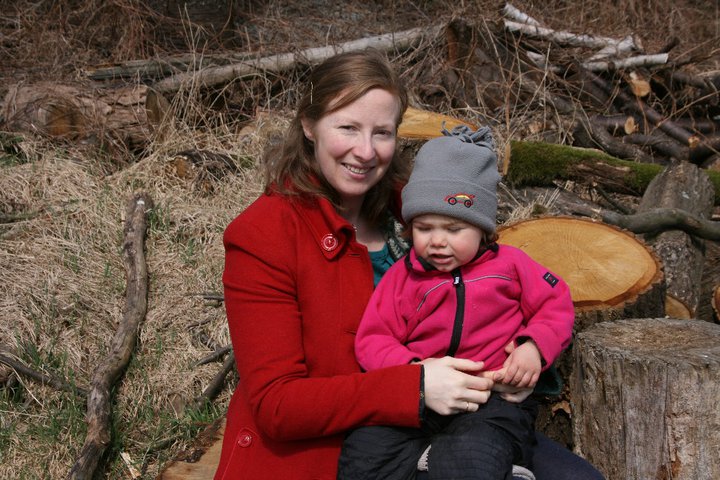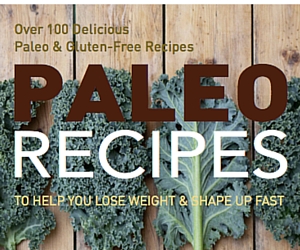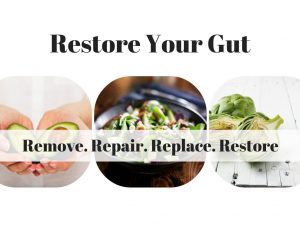I live in one of the most remote places in the world, a tiny island off the south coast of Iceland. I moved from Scotland for my PhD some years ago and have been here ever since. Both of my children were born on Heimaey where there is a well-equipped local hospital although you have to travel to Reykjavik for anything complicated.
I specialise in animal behaviour and physiology and have undertaken observation studies on creatures as diverse as wolves and lobsters. The skills and techniques I have developed over the years allowed me to identify my daughter’s autistic behaviours earlier than others might. For this reason, we started the process for an evaluation when she was just three years old which I have since learned is quite early for Asperger’s Syndrome.
At the time, I knew very little about autism research because up that point I had simply helped her develop coping mechanisms for all of her challenging behaviours. So, for example, our lives followed a strict routine and we gave her what we called the ‘five minute warning’ before interrupting whatever activity she was engaged in to do something else. However, as her behaviour became more and more controlling, her rituals more pronounced and her rages more extreme, I began to look for a better approach.
By sheer serendipity, a friend of mine passed me an Icelandic article about a little boy whose symptoms were very similar to my daughter’s. This included even the ones that did not seem linked to ASD such as the fact that she was always hot, especially at night when we could not keep bedclothes on her, or the asthmatic night cough that came and went. In this child, the symptoms all disappeared when cow’s milk was eliminated from his diet.
In our case it took about two weeks but the change was nothing short of incredible. Actually, it was probably about six weeks altogether but more through circumstance than anything else. For the first month I was very half-hearted about the change in diet; she no longer had milk to drink but I allowed her cheese and Skyr, an Icelandic dairy product. I noticed a small improvement but nothing significant.
Then we went to Scotland for a family visit and I had the chance to switch from cow’s milk to goat’s milk. I was very familiar with this as an alternative because cow’s milk triggered my mum and brother’s psoriasis and eczema. Over the fortnight following the change of milk and the serious elimination of all cow’s milk products and ingredients, she improved on all fronts. Her hoarding stopped, her rages decreased in frequency, she became less rigid and compulsive in her need for control and order, and her rituals which had dominated her days faded until they were simply no longer there.
Soy – cross-reactivity with cow’s milk
We returned to Iceland and I informed the kindergarten that we had removed cow’s milk from Eden’s diet with very positive effect. At the time, goat milk was not readily available in Iceland so we did what many do when switching from cow’s milk and used soya. Over the next four days, her old behaviours began to reappear but now there was the added symptom of needing to urinate urgently and frequently.
Normally I might consider a bladder infection but the lack of any accompanying symptoms such as a fever or stomach pain made me suspect that it was linked to the reappearance of her ASD behaviours. I began to research the scientific literature and discovered that certain proteins in soy show cross-reactivity with caseins from cow’s milk and while this specifically referred to cases of allergy, I wondered if it might relate to our situation too. We switched once more from soya milk to oat milk until we could source more goat milk and once more, her symptoms went into remission.
Her teacher took me aside a week or so later and told me that the difference in my daughter was so profound that it was like seeing two separate children, and if she had not seen it with her own eyes would not have believed it. In fact, as I talked to more people about it I found that this was a common reaction, that in the absence of seeing it themselves, they simply found it too hard to believe. After all, we are taught from an early age how important and good milk is.
How diet influences the brain
I began my journey into resolving the mechanism by which particular dietary components trigger her autistic traits. I realised that for people to accept and benefit from it, resolving the mechanism was vital. Without that, it simply sounds too implausible and to be honest, I can completely relate to that – I was and am an anti-snake-oil person. I have always needed evidence and understanding before I can accept something.
But what separates me from most now is that I have been humbled by what I have seen with my own eyes. I had been quite arrogant in my scientific surety of what were well-established facts. Now I like to check the quality of the facts presented in the published literature myself – what was the sample size, what methods were used to collect and analyse the data, where are the gaps in the study that might mean the researcher overlooked something important?
As for my daughter, she continued to improve over the next few months. Most of her debilitating symptoms simply went away, others she had to unlearn. One of the most important and for us was that she began to show affection for her father again. Just prior to starting the autism evaluation process was she had withdrawn further and further from her him, from both us in fact, but much more noticeably from him.
Now, she talked…constantly (we even joked that we would start giving her milk again just to get some peace), she climbed all over him, hugged him, asked to be tickled or chased or played with. One day I even saw her in the garden copying the neighbour’s child next door by shouting and waving to someone passing by. If you had told me any time previously that my daughter would be not only talking to a stranger but initiating contact, I simply would not have believed you.
Occasional accidents where my daughter consumed a product containing dairy or soya became unintentional dietary challenges. I noticed that each time, her ASD symptoms such as the repetitive lining of her toys or her controlling, compulsive behaviour would reappear. In fact, in the early days it was through her behavioural changes that I found certain foods contained these things! I quickly learned to screen ingredient lists.
I began to keep a diary recording everything she ate and her mood and behaviour; in this way I was able to identify foods that triggered her symptoms. Each time I suspected a food, I would wait for a few weeks and give her a controlled challenge with it. The list included of course cow’s milk and soya, but also peanuts and sugar. Good quality raw honey was fine but cheap commercial honey with its high glucose content was very bad.
The link with inflammation
I also came to realise something very important: each onset of her ASD behaviours was triggered by inflammation in her GI tract. From a very age, she had noticeable inflammation around her anus and her urethral opening (these mark the end of the GI tract). This went away when we changed her diet but I found that each time she consumed a banned product, the inflammation would reappear about six hours later and then her behaviours would begin to emerge. Both the inflammation and the ASD behaviours would last for four to five days after which she would be depressed, weepy and fatigued.
The link with physiological stress
I also realised something even more important. The pattern of her behaviours is one that I recognise from my work with animals: it is a stress response. Imagine that the body is like a piece of clockwork with each individual gear or cog reflecting a different body system – the immune system, the circulatory system, the nervous system etc. When you present a challenge to an individual system, you place some ‘stress’ upon it. For example, when you are exposed to a cold virus, it is a challenge to your immune system…it places it under some stress. Each system has some capacity to cope with this stress; that is precisely what its function is, to deal with the challenges your body might face.
However, occasionally a system encounters something that it perceives as being greater than its capacity to cope with. This places too much stress on that particular system… and because all of the gears are linked, the whole clockwork mechanism is affected. Like winding a watch too tight and bursting a spring somewhere inside. This is a stress response. It involves: one or more of the body systems, a challenge that seems to be or is greater than the body can regulate and a cascade of neural and hormonal reactions that go on for a prolonged period of time and can be seen in behavioural & physiological output.
To gather evidence for this, I used a monitor that records changes in skin conductivity (a well-established method for measuring stress). In the first right image, you see the recording from the monitor during a normal, uninflamed 24 hour period (the blue line is daytime, the red line night time and the peak is where she is having a restless dream), and on the left it is from a 24 hour period during an inflammatory flare. You can see that the reading is almost off the scale. She is in a state of stress.
In the second image, the left side shows how her behaviours change in intensity and occurrence over the five days following a dietary challenge. A darker shade refers to the time when the behaviour occurred more frequently. So, here is the pattern I talked about earlier: dietary challenge->inflammation->aggression, hyperactivity, the presence of rituals (lining toys, being first), withdrawal->depression & fatigue. Then next to this image is the recording from her monitor. Nervous system activity supports the behavioural observations.
To me, the implications from this are staggering; an inflammatory response to common food ingredients so pronounced that it impacts on neural development. It is horrible but at the same time reassuring; there is something that you can do. In fact, this is the one thing that you do have control over. Simply identify the inflammatory triggers and avoid them. I came to the Paleo community a little backwards – it started with elimination but I quickly came to see the wealth of information and experiences here to be a powerful resource.
Last year I secured a research position in a top autism research centre to explore this more fully in the wider autism population provisional on funding. However, my first funding application was not granted and now the placement is no longer available as the lab is at full capacity. I am absolutely committed to pursuing this scientifically because although I recognise and support the benefit of medical intervention, why would you go down this route if simply swapping one milk for another and avoiding sugar were enough?
I hope to inspire and collaborate on well-designed clinical trials to further our understanding of how diet factors may act as environmental triggers for ASD. To this end, I have begun applying to research centres around the world for a post-doctoral position. However, it’s just as important to inspire parents to seek out information on how to optimise their children’s health. So read, arm yourself with information and do everything in your power to promote a healthy body and therefore a healthy mind.
I’m very interested to hear from anyone who has also experienced improvement in any kind of neurodevelopmental condition following a change in diet. You can find me on the Facebook page, Food For Thoughtism and you can see the full presentation I prepared to introduce myself to potential research collaborators here











You must be logged in to post a comment.